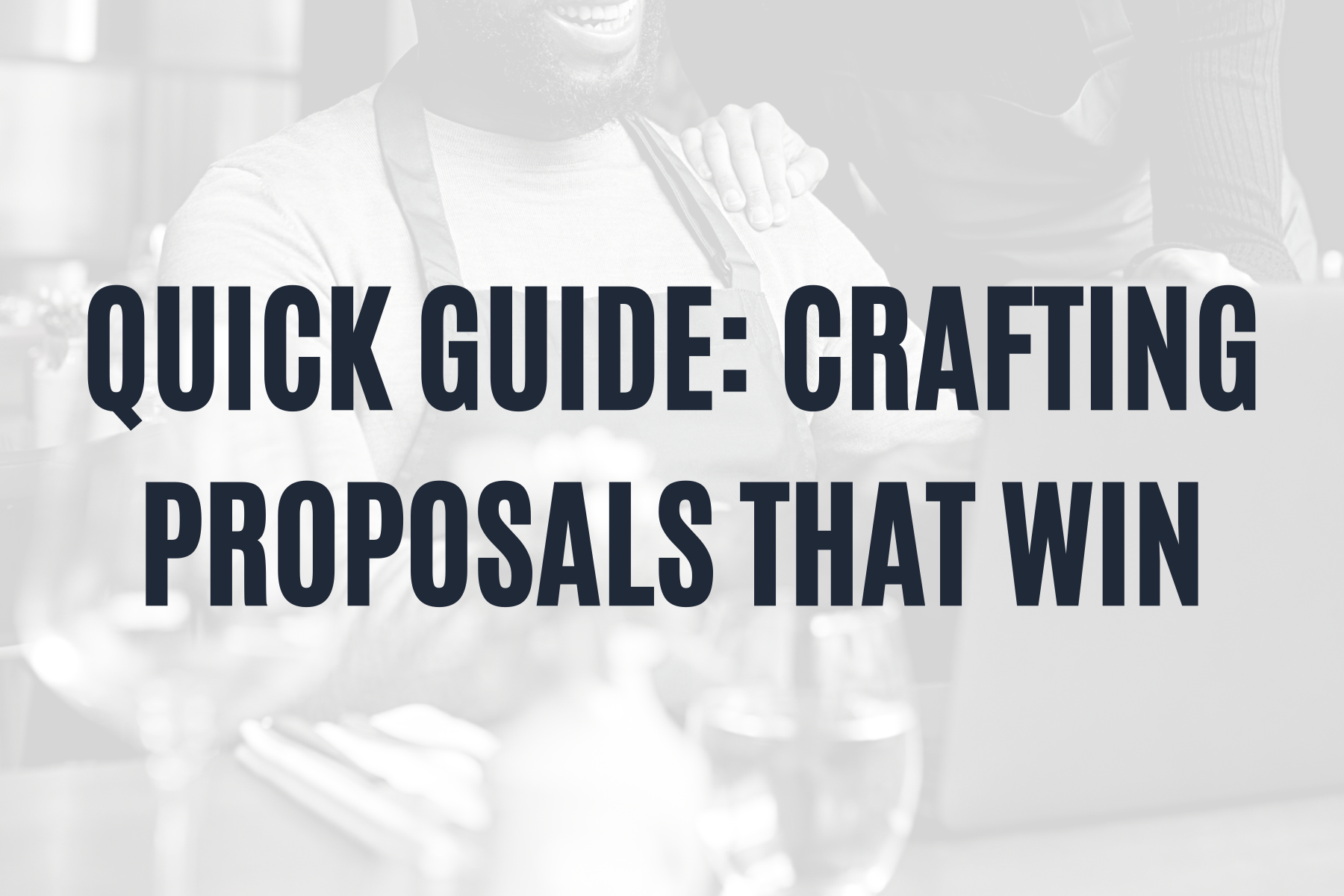Want to receive The Solopreneur’s Shortcut every week? Subscribe here. We’ll send one thought, one tactic, and one time saver straight to your inbox. No fluff, just proven techniques for growing your business.

It took me 30 minutes to write a proposal worth $73k.
I’ll explain my process step-by-step and give you a copy of it shortly, but first I’ll need to explain why I had to create the proposal so quickly.
This was a busy week for me. My birthday was on Tuesday and I also spent two full days in business development meetings with my new partners.
So, I was clearly short on time, but I knew I had to prioritize one more task.
Earlier in the week I had a discovery call with another potential partner. They were very interested in me creating content for their community and requested a proposal.
It took them by surprise when I told them they would have it by that Thursday. They would have been even more shocked to know that I wouldn’t even be able to start writing the proposal until Thursday afternoon.
I’ll provide you with a link to the proposal I delivered at the end of this message.
And sure, you could skip ahead and look at it now, but you may gain more value by understanding the process and mindset involved with each step.
Another heads up, this edition of the newsletter is more of a guide so I suggest saving it and walking through all the steps for your next proposal.
Let’s get started.
Step 1: Know your value
Before you even start writing the proposal, you need to reflect on the prospect’s current situation, and how your work will help them make progress towards a meaningful goal.
They aren’t doing you a favor by hiring you. It’s quite the opposite. You have the solution they’ve been waiting for, so your time and talent need to be compensated accordingly.
Keeping this in mind will boost your confidence, clarity, and impact how much you charge.
Step 2: Situation Overview – Skip the fluff
Now it’s time to write a quick overview of the opportunity and proposed services. I’ve noticed two people make two common mistakes here.
- Telling the prospect stuff they already know
- Telling the prospect stuff they don’t care about
What does this mean to you? Don’t waste time writing long-winded sentences about what the company is currently doing, the challenges they’re facing, and how your solution will solve their problem.
Here’s why;
They already know what they’re doing, they’re even more clear on their challenges than you are, and they just want to hear about your solution.
So don’t bore them before you get a chance to impress them. Just provide a quick overview in 2-3 sentences.
Step 3: Key Outcomes – Focus on what matters
You skipped the fluff and retained their attention. Now is when you demonstrate your understanding of the prospect and their challenges by documenting the key outcomes you’ll deliver.
Brevity is still key here, so use bullet points.
I’ll share an excerpt from my proposal now. And, for context, this company provides a free online community.
These are the outcomes I referenced:
- Increase awareness and enrollment among target audience
- Increase community engagement and individual participation
- Create meaningful, measurable outcomes for program members
This quick summary is all you need to demonstrate that you “get it” and have designed a plan to deliver the specific outcomes they’re looking for.
Step 4: Key Metrics of Success – Measure what matters
Once you have the key outcomes established, it’s time to quantify what success looks like.
This means determining the key metrics of success. Or, in other words, how will you measure the impact of your work?
Here’s what I included in my proposal:
- Net new enrollment in online community
- Increase in average number of courses completed per member
- Produce ten case studies, highlighting the success of program members
- Increase Net Promoter Score and referrals
I’ll stop to say that when possible, you should assign hard numbers to these metrics.
So, instead of, “Net new enrollment in online community,” you’d say, “5,000 net new enrollments in online community.”
That said, you may not feel comfortable estimating a specific number. In this case you should ask the client what success looks like to them.
I’m not saying you should just go with whatever number they give you, but it will provide you with a range to base your proposal off of.
Step 5: Deliverables – Describe the dream outcome
This is where you include the specific deliverables the prospect will receive and this is where you should spend the most time when writing the proposal.
I’m going to share one of my deliverables below because I think it’s one that many of you can provide as well:
Virtual masterclass for entrepreneurs + accompanying eBook.
- One hour webinar hosted by Terry Rice on a topic agreed to by all parties. Ex. “Get Unstuck: How to Identify and Eliminate Roadblocks as an Entrepreneur”
- Attendees will be provided with an eBook that allows them to apply what they’ve learned to their specific business
- Attendees will then be encouraged to join online so they can review their homework in another live session with Terry Rice
- This webinar will be made available on-demand going forward in order to continually attract and convert qualified community members
Notice I mentioned what will be provided and the impact. This is how you start to demonstrate the return on investment from working with.
If you’re considering offering workshops (or currently offer them), I strongly encourage you to consider leveraging the exact approach I’ve outlined above.
You’ll be even more encouraged once you see how much I charge for it.
If you need help designing your speaking topic, I’m leading a masterclass in a few weeks that will take you through my step-by-step process. You can learn more about it here.
Step 6: Compensation – Respect your time and talent
Here’s something I’ve learned about pricing over the past eight years: The more willing you are to negotiate, the more money you can make.
This is important because if you start by offering your best and lowest price, there’s nowhere to go but down.
And I’m not saying to just charge a super high price and wait for the prospect to talk you down. Instead, itemize your deliverables as well as the associated costs.
This way you can negotiate the final rate – without lowering your price – by adding or removing deliverables. But you can only make that happen if you break out each deliverable and the associated cost in your proposal.
For example, let’s say I was selling potted plant sets for $50. Here’s how I could break down the total cost.
- Plant – $30
- Pot – $10
- Dirt – $5
- Shovel – $5
Total – $50
A customer might say $50 is way too much for the set. That’s fine, I get it. But I can still sell them the plant for $30 without lowering my rate.
Now, replace potted plants with whatever you’re selling and take the same approach with your proposal.
Step 7: Payment process – Set your own terms
Next up, it’s time to get paid. But here’s what I want you to avoid, waiting to get paid.
I’ve waited as long as 90 days to get paid after the project was already delivered. These days I tell prospects I can’t even start working until I’ve received payment.
You should do the same.
At a minimum, request a 20% deposit upon signing the contract. Then, determine when the remaining balance will be paid based on the completion of specific tasks or milestones.
As you’ll see, this is what I included in my proposal.
- 50% upon agreement
- 50% upon completion of all deliverables
That said, they may counter and want the payments split up a bit more.
That’s fine, it’s something we can talk about, but at least I approached from a position of power as opposed to selling myself short and just hoping for a yes.
You should take the same approach.
Remember, if people want to work with you, they’ll be willing to negotiate. So don’t feel like you need to perfect every aspect of your proposal before sending.
What’s next?
As promised, you can see a redacted version of the proposal I sent here. Feel free to make a copy and use it as a guide for your next project as well. And if you know of anyone else who would gain value from it, feel free to share.
Also, a quick reminder that I still have spots available in the upcoming keynote masterclass. You’ll learn how to create and deliver a keynote that builds your brand and revenue.
In my experience, speaking has always been the easiest way to attract clients who don’t haggle over fees and say “yes” quickly. You can learn more and sign up here.
That’s it for now. Have a great weekend!

